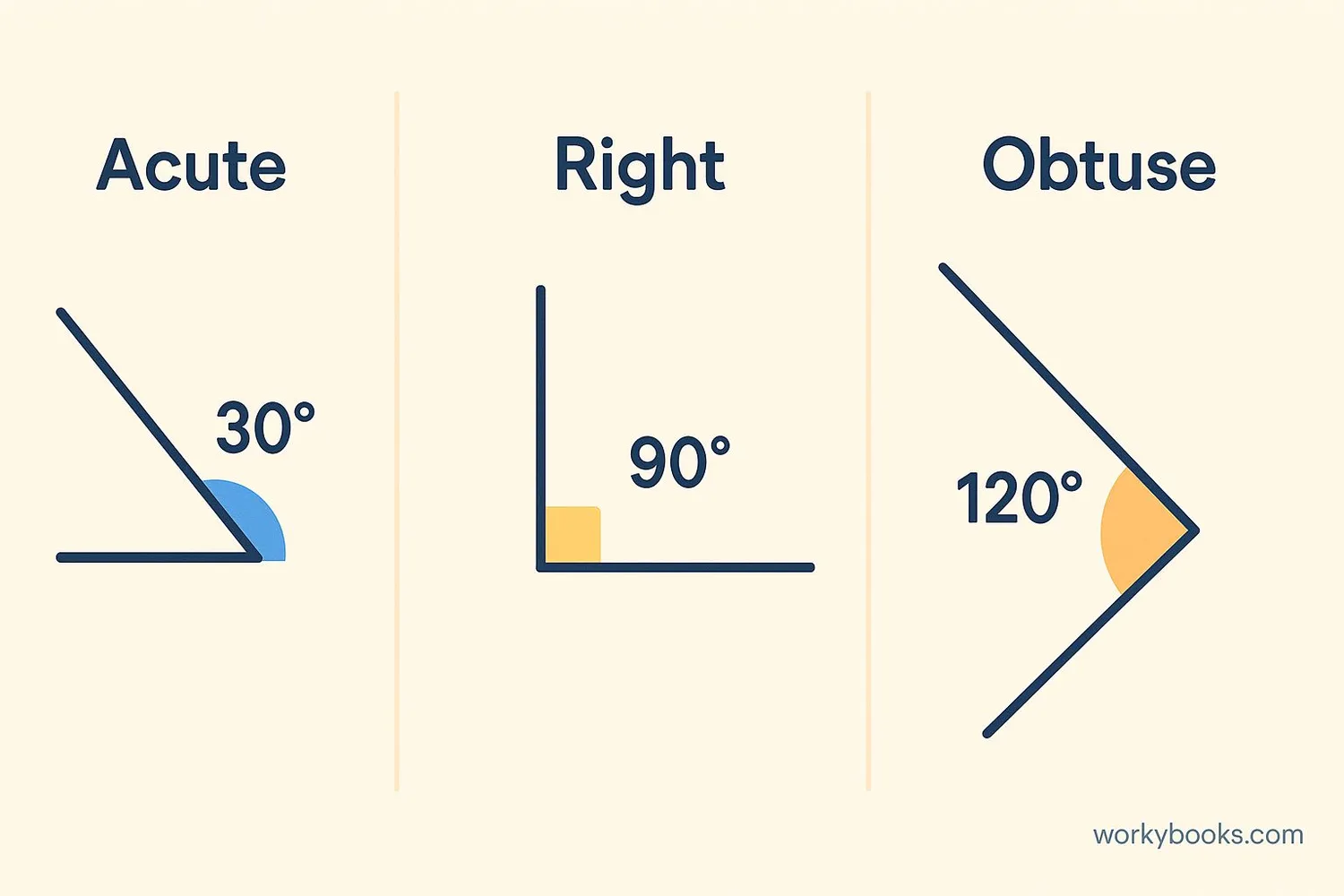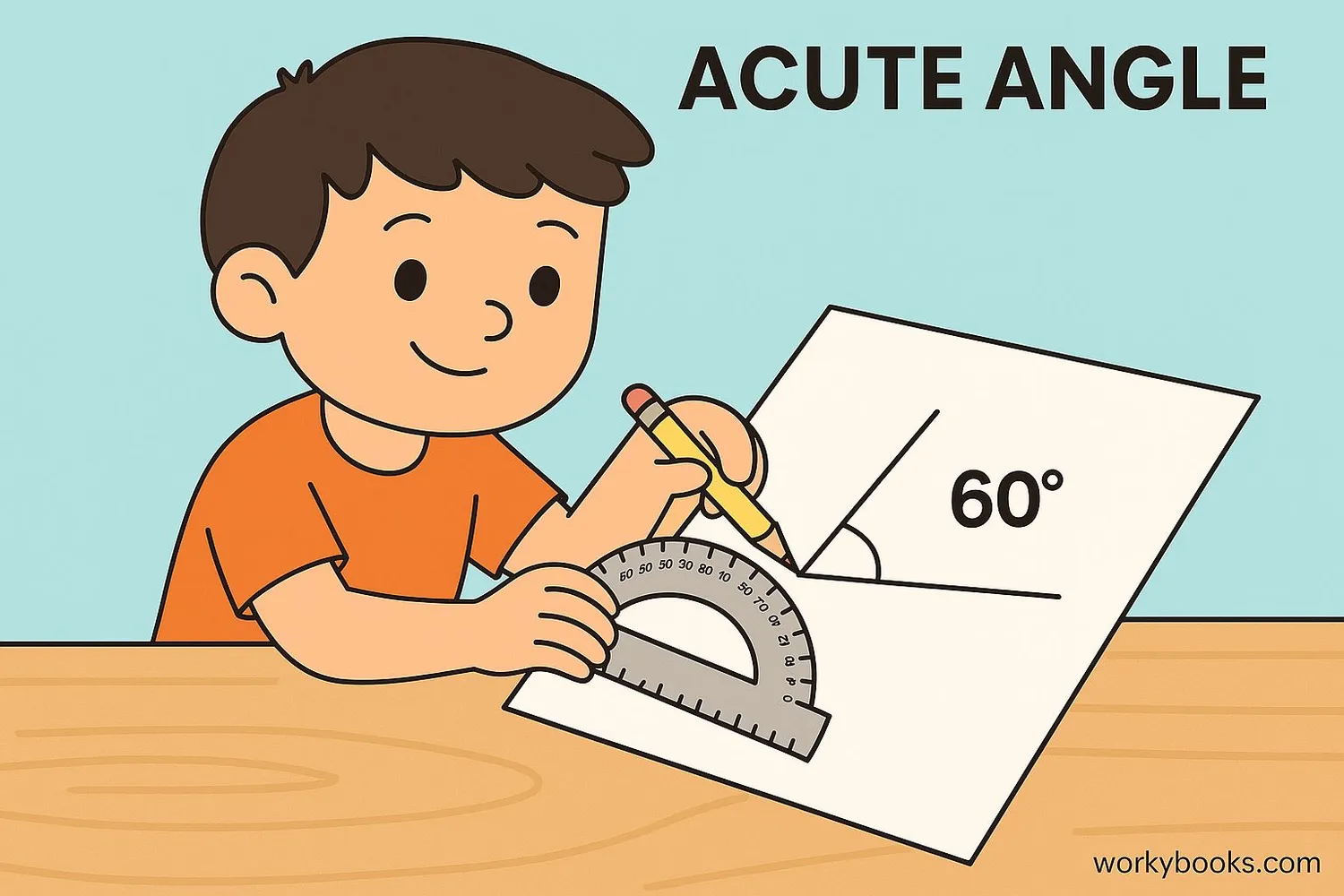Acute Angles - Definition, Examples, Quiz, FAQ, Trivia
Learn about angles that are smaller than a right angle with simple explanations and visual examples
What is an Acute Angle?

An acute angle is an angle that measures less than 90 degrees. It's smaller than a right angle (which is exactly 90 degrees) and looks like a "sharp" corner.
Think of the letter "V" - the point where the two lines meet forms an acute angle. Acute angles are all around us in everyday objects and shapes.
Here are some key facts about acute angles:
- Measures between 0° and 90°
- Appears "sharp" or "pointy"
- Found in triangles, polygons, and many everyday objects
- Opposite of obtuse angles (which are larger than 90°)
Key Concept
Any angle smaller than 90° is acute. The smaller the angle, the "sharper" it looks.
Acute Angle
< 90°
Right Angle
Exactly 90°
Obtuse Angle
> 90°
How to Identify Acute Angles

Identifying acute angles is easy once you know what to look for. Here's how you can spot them:
Visual Identification: If an angle looks smaller than a perfect corner (like the corner of a book), it's probably acute. Acute angles appear "sharp" or "pointy."
Using a Protractor: Place the center of the protractor on the vertex (corner point) of the angle. Align the baseline with one side of the angle. Read the measurement where the other side crosses the protractor. If it's less than 90°, it's acute!
In Triangles: Acute triangles have all three angles measuring less than 90°. You can also have right triangles (one 90° angle) and obtuse triangles (one angle greater than 90°).
Angle Classification
Remember
When you see a corner that looks like it could "pinch" you, it's probably an acute angle!
Acute Angles in Real Life

Acute angles are everywhere once you start looking! Here are some common places you'll find them:
1. Pizza Slices: The tip of each slice forms an acute angle.
2. Scissors: When open slightly, the blades form an acute angle.
3. Letter 'A': The top point of the capital 'A' is an acute angle.
4. Mountains: The peaks of mountains often form acute angles.
5. Roofs: Many house roofs have acute angles at their peaks.
6. Arrowheads: The pointed tip of an arrow is made of acute angles.
Next time you're walking around, try to spot acute angles in your environment!
Activity
Look around your classroom or home and find three objects that have acute angles. Draw them in your notebook!
Acute Angle Practice Quiz
Test your knowledge with this 5-question quiz. Choose the correct answer for each question.
Frequently Asked Questions
Here are answers to common questions about acute angles:
Angle Trivia
Discover interesting facts about angles:
Ancient Angle Knowledge
The ancient Egyptians used angles extensively in pyramid construction around 2500 BC. The Great Pyramid of Giza has angles of approximately 51.5°, which is acute!
Nature's Angles
Honeybees build honeycombs with hexagonal cells that have 120° angles. But at the bottom of each cell, they create a pyramid shape with three acute angles of about 70°.
Angles in Space
When astronauts on the Moon look at Earth, they see it at an angle of about 2°. This is an acute angle that helps them judge distances in space.
Smallest Angle
The smallest angle ever measured is less than 0.000000001 degrees! Scientists measure such tiny angles when studying distant stars and subatomic particles.





